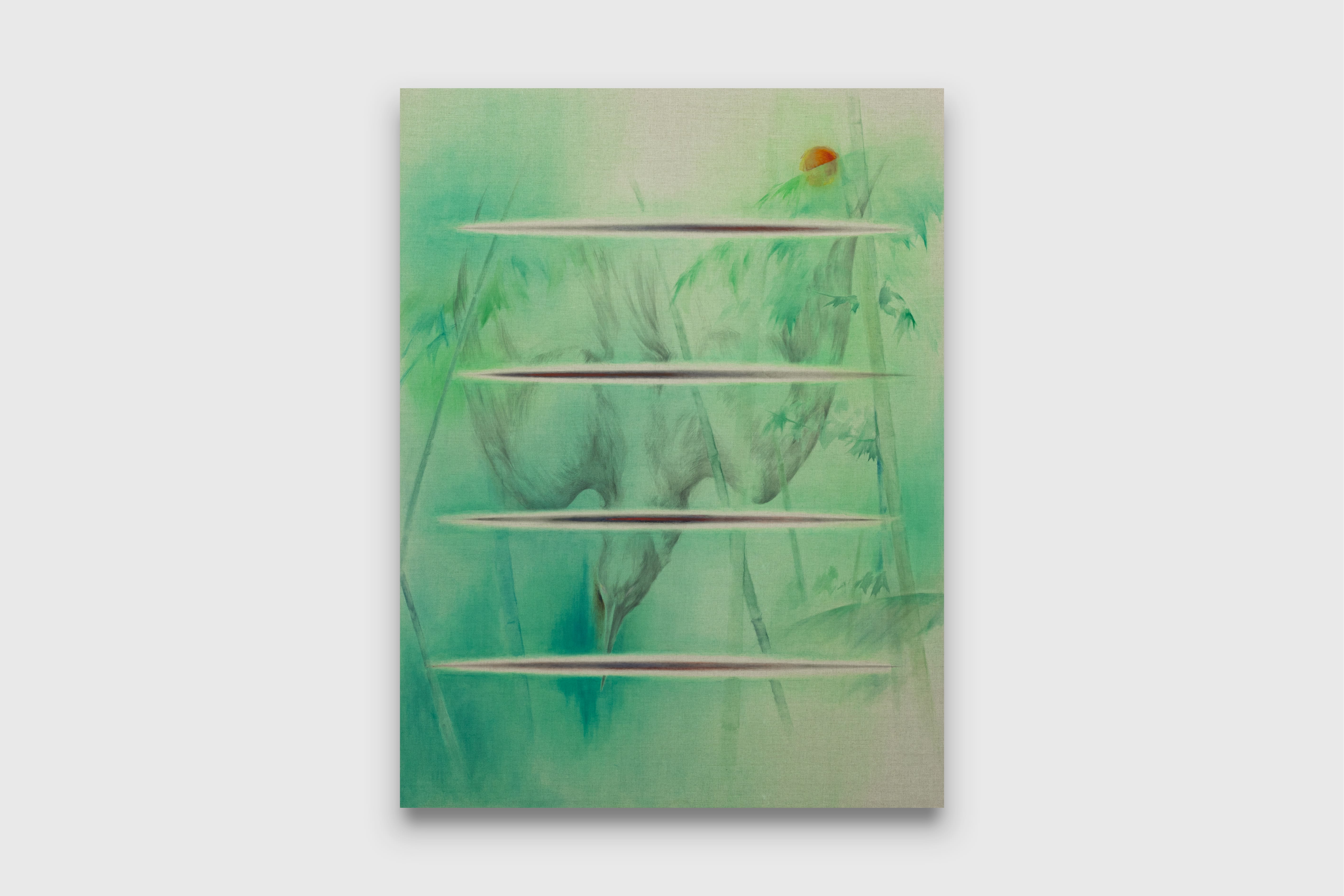
COMA is pleased to present a solo exhibition by Chinese artist Yimiao Liu (b.1993, Hunan, China), titled, Persistence of Vision, opening Friday 2 August 6-8pm. This is the artist's first solo presentation with the gallery and taking place at 2/27-39 Abercrombie Street, NSW, 2008.
Persistence of Vision is centered around ideas surrounding fixed destiny and denouement of characters in films and literature, as well as the renewal of people’s state of mind after repeatedly understanding and misunderstanding the world. Yimiao’s fascination with perturbed individuals, hesitant and ambiguous emotions, often embellished and veiled by self-esteem and desire, operates as the background colour of eternity. Drawing from a well of visual and cultural history, referencing popular Chinese films such as Crouching Tiger, Hidden Dragon (2000), Lust, Caution (2007) and Rouge (1987), as well as traditional Chinese painting and poetry, Persistence of Vision constantly blurs the lines between fiction and non-fiction.
“I have always had an attachment to blue, as blue is to itself. It is the sky and the sea, a determined path forward, without looking back. I wanted to paint a ‘complete certainty.’”
This idea of self-determination and forward momentum further communicated through the image of a flying bird placed in the centre of The Irresistible Blue. Mid-flight the bird appears to be flying between two realities, day and night, here and now, it soars towards the unknown. Yet there is direction and assurance in its path. The bird is guided and guarded by a single arrow pointing towards the expansive world beyond the canvas edge. In the process of painting this piece Yimiao often thought about the sculpture of Diana (Roman Goddess of the Hunt), exhibited at The Metropolitan Museum of Art. The calm and gentle posture in which she is shooting her arrow, tender yet determined.
Abyss draws inspiration from the film Crouching Tiger, Hidden Dragon (2000), directed by Ang Lee, that the artist has watched many times. In the final scene of the film, the protagonist jumps off a cliff, propelling herself into an abyss, the unknown, a void. The ambiguity surrounding her final destination, acts as a metaphor for the nature of life, where irrationality and reason meet. In search for an absolute, the protagonist chooses the ultimate certainty, after watching ‘a thousand sails pass’, she is determined to become the conductor of her own destiny. The background ofAbyss has been deliberately blurred - the sunset references the ending of the day, the final curtain drawn, the fallen bird again refers to the main character of the film, and the bamboo is a glimpse of reality – combining multiple endings and scenarios extrapolated from both reality and fantasy. Layered in the foreground the four scars are a physical marking of past lives - the damage, the memories, the repair - even though they are healed, there will always be a mark.
The rabbit in Ask the Moon directly references Chinese Parasol Tree (18th) by Leng Mei, a Chinese painter in the Qing Dynasty. In this piece, Mei introduced Western painting techniques, to depict two rabbits playing under a Chinese parasol on the Mid-Autumn Festival, a yearly event to celebrate the full moon. Conversely, In Yimiao’s rendition she uses contemporary Western painting materials such as oil but applies them as if they were a traditional Chinese ink wash, light, airy and delicate. In doing this the artist creates a surreal and almost dream-like version of Mei’s pastoral scene, which is undercut by an acute violence as the lone rabbit is executed by thousands of arrows. Yimiao takes the romance, playfulness and innocence associated with the original image and pairs it with cruelty - emphasising the artists own irrational understanding of romance and longing, the pain and destruction that accompanies it - “though pierced by ten thousand arrows, I showed my heart to the moon.”
